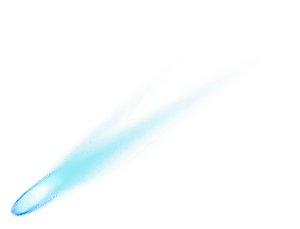The Downlink • Dec 04, 2020
Would you care for a sample?
Space Snapshot

Japan’s Hayabusa2 spacecraft is scheduled to return a sample of asteroid Ryugu to Earth this week. This image of Ryugu’s rocky surface was taken in 2018 by MASCOT, the German Aerospace Center’s Mobile Asteroid Surface Scout lander, which separated from Hayabusa2 to land on Ryugu in preparation for sample collection. Image credit: MASCOT/DLR/JAXA.
You love space, now take action
This weekly newsletter is your toolkit to learn more about space, share information with your friends and family, and take direct action to support exploration. Anyone can subscribe at planetary.org/connect to receive it as a weekly email.
Mission Briefings


China’s Chang’e-5 spacecraft collected Moon samples for return to Earth. The spacecraft is back in lunar orbit after blasting off from the surface on 3 December. The samples, which are expected to land in inner Mongolia around 15 December, will help scientists understand what was happening late in the Moon’s history and how Earth and the solar system evolved. Learn more about Chang’e-5 and watch a beautiful video of the spacecraft’s landing on the Moon. Pictured: Chang’e-5’s view of the lunar surface. Image credit: CNSA / CLEP.

The samples of asteroid Ryugu collected by Japan’s Hayabusa2 spacecraft will land in Australia Saturday. The spacecraft launched in 2014, arrived at Ryugu in 2018, and collected two samples in 2019. The samples will teach us more about the origin and evolution of our solar system, and help efforts to defend Earth from potential asteroid impacts. Hayabusa2 will next begin a long trip to visit two more asteroids during the next 10 years. Learn more about the mission.

The Arecibo Observatory radio telescope has collapsed. The telescope’s 900-ton instrument platform pulled loose from its support towers and plunged through the dish. You can see a video of the collapse on the National Science Foundation (NSF) website. The NSF had already decided to decommission the iconic telescope after two support cables failed and engineers declared it unsafe for repairs.

A cargo-carrying SpaceX Dragon vehicle blasts off for the International Space Station tomorrow. The uncrewed Dragon will dock autonomously on 6 December. Among its contents: a small airlock to transfer equipment and science experiments between the station and the vacuum of space. Learn more about the International Space Station and NASA’s Commercial Crew Program.
From The Planetary Society


Honoring the legacy of Arecibo. The above image shows just how catastrophic the damage was to Arecibo Observatory when its instrument platform fell, crashing into the radio dish below. In this week’s Planetary Radio, host Mat Kaplan speaks with Francisco Córdova, the director of Arecibo, in an interview recorded shortly before the collapse occurred. Although this is a tragic disaster for the magnificent 305-meter telescope, Córdova tells stories of amazing discoveries it made and shares an optimistic outlook for the future of the facility.

Stay up to speed on space policy and advocacy. Sign up for the Space Advocate newsletter and get a monthly digest of the latest space politics news, commentary, and opportunities to take action in support of NASA, directly from our chief advocate and senior space policy advisor Casey Dreier.
What's Up

In the evening sky, see bright Jupiter and yellowish Saturn closer together each night toward the west, with Mars further to the east. See Venus bright in the predawn sky toward the east. Looking ahead, on 13-14 December the Geminid meteor shower peaks. Without much of a Moon in the sky, the viewing should be fantastic (weather permitting). Learn more at planetary.org/night-sky.
Give the gift of a love of space

The approaching holidays are a great time to give your loved ones a cosmic gift. If you need ideas, we’ve got a great guide to the best gifts for people who love space. And to give a gift that also supports The Planetary Society, consider buying your loved one a gift membership or a custom engraved brick at our headquarters. If you’re buying a gift membership and want your recipient to receive their t-shirt in time for Christmas, be sure to sign them up before 9 December, or 7 December if you live outside of the United States. Pictured: A pin commemorating the Pioneer plaque, featured in our holiday gift guide. Image credit: messagesfrom.earth
Wow of the Week

Planetary Society supporter Barbara El Naby sent us this week’s Wow, which captures the beauty of our solar system and shows many of the types of celestial objects from which samples have been collected over the years. She based her designs on real space imagery from missions like SOHO, Hubble, and Voyager.
Do you have a suggestion for the Wow of the Week? We’re looking for space-related art, music, gadgets, quotes, fashion, burning questions, brief sci-fi passages, or anything else that will make our readers go “Wow!” Send us your idea by replying to any Downlink email or writing to [email protected], and please let us know if you’re a Planetary Society member.


 Explore Worlds
Explore Worlds Find Life
Find Life Defend Earth
Defend Earth


